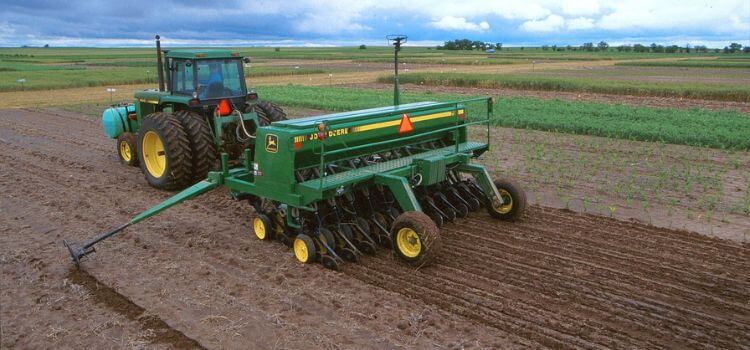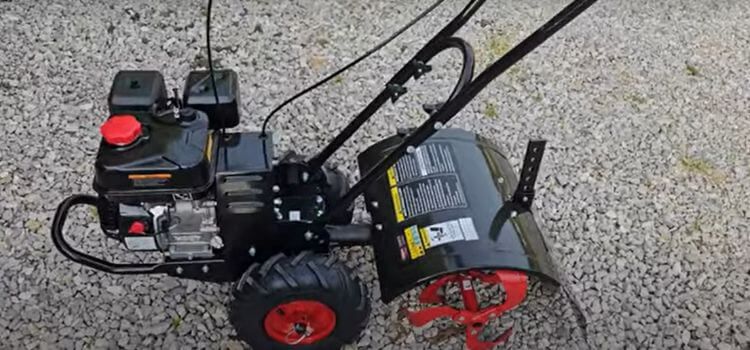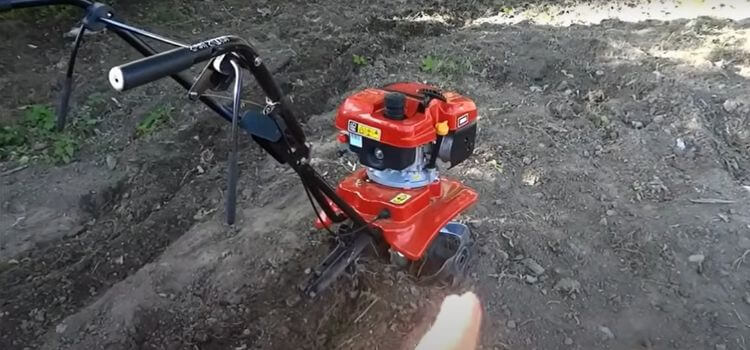As an Amazon Associate, I earn from qualifying purchases.
A power rake removes thatch and debris from lawns, while a tiller turns and aerates soil for planting. Both tools serve different purposes in lawn care and gardening.
A power rake is essential for maintaining a healthy lawn by removing thatch and debris, allowing grass to breathe and absorb nutrients. This tool is ideal for reviving tired lawns and promoting lush growth. On the other hand, a tiller is indispensable for gardeners who are preparing soil for planting.
It breaks up compacted soil, mixes in organic matter, and creates an optimal environment for seeds and plants. Choosing between a power rake and a tiller depends on your lawn and garden needs. Both tools can significantly enhance the health and appearance of your outdoor spaces.
Yard Care Tools
Proper tools make yard work easier and faster. They help you get better results. Using the right tool can save your back and knees. It also makes the yard look great. Good tools can last for many years. They are worth the investment.
A power rake helps remove thatch from your lawn. Thatch is dead grass and roots, and removing it helps your lawn breathe. Power rakes are great for extensive lawns, as they can cover large areas quickly. Tillers, on the other hand, break up the soil. They are used to prepare gardens for planting. Tillers mix the soil and add air, helping plants grow strong and healthy. Both tools have essential roles in yard care.
What Is A Power Rake?
A power rake efficiently removes thatch and debris from lawns, promoting healthier grass. Unlike a tiller, which turns soil, the power rake focuses on surface-level lawn care.
Functionality And Design
A power rake helps remove thatch and debris from lawns. It has rotating tines or blades that dig into the soil’s surface. This process lifts dead grass and thatch. It improves the lawn’s health by allowing air and water to reach the roots. A power rake is often adjustable. You can set the depth to suit different lawn conditions. It is usually powered by gas or electricity.
Common Uses In Yard Care
Commonly used in spring or fall, it helps prepare the lawn for new growth, removes layers of dead grass that block nutrients, improves soil aeration and water absorption, prepares the soil for overseeding, and can also level uneven areas in the lawn. It is an excellent tool for lawn renovation projects.
What Is A Tiller?
A tiller is a garden tool with blades or tines that turn the soil. There are two types: front-tine and rear-tine. Front-tine tillers are smaller. Front-tine tillers are good for small gardens and work well in large areas.
Tillers are used for soil preparation. They help mix fertilizers into the ground. Farmers and gardeners use them often. Tillers make the soil loose. This helps plants grow better. They are also used to remove weeds.
Critical Differences Between Power Rakes And Tillers
Power rakes use rotating blades to remove debris and level soil. Tillers dig into the ground with rotating tines. Power rakes are more gentle on the soil. Tillers break up hard soil and mix in nutrients. Power rakes work best for surface tasks, while tillers are better for deeper soil preparation. Both tools have specific uses in gardening.

Use a power rake to remove thatch and level lawns. Tillers are perfect for preparing garden beds. Power rakes help clean up yards. Tillers improve soil for planting. Power rakes are excellent for renovating lawns. Tillers work well for starting new gardens. Each tool has a unique purpose.
Benefits Of Using A Power Rake
A power rake effortlessly removes debris, dethatches, and levels soil. Unlike a tiller, it prepares lawns quickly, ensuring a smooth surface.
Enhances Soil Health
A power rake can help break up compacted soil. This allows air and water to reach plant roots. Healthy roots mean a healthy lawn. It also helps remove thatch. Thatch can stop nutrients from reaching the soil. Removing thatch improves the soil’s ability to absorb nutrients.
Prepares Lawn For Seeding
A power rake can smooth the lawn for new seeds. It loosens the soil, creating a good seedbed, which helps seeds germinate faster. A smooth lawn means seeds can grow evenly. Using a power rake can help you get a lush and green lawn.
Benefits Of Using A Tiller
Tilling breaks up hard soil, allowing air to reach plant roots. This allows plants to grow stronger and healthier. Tilled soil also holds water better, which is good for your garden.
Tillers remove weeds by turning the soil. Weeds struggle to grow back, and your plants get more nutrients. Your garden looks cleaner and more organized. Weed seeds are buried deep, reducing future weed growth.
Choosing The Right Tool For Your Yard
Power rakes are great for removing thatch and debris. They help grass grow better by letting water and nutrients reach the roots. Tillers break up hard soil and mix in compost. This makes the soil softer and better for planting. The right tool depends on your yard’s needs.
Sandy soil drains quickly but lacks nutrients. A power rake may help by removing dead grass. Clay soil holds water and can become compacted. A tiller can break it up, making growing plants more accessible. Loamy soil is the best for most plants. It may only need light tilling to stay healthy.
Maintenance Tips For Power Rakes And Tillers
Clean your power rake and tiller after every use. Remove any dirt and debris. Check the blades for wear and tear. Inspect the engine and oil levels regularly. Tighten any loose bolts and screws. Look for any signs of rust or damage. Ensure all parts are working correctly.
Store your equipment in a dry and cool place. Could you keep it away from moisture? Use a cover to protect it from dust. Drain the fuel before long-term storage. Check and replace oil as needed. Lubricate moving parts to prevent rust. This will extend the life of your tools.
Safety Tips When Using Yard Care Tools
Wear protective gear while using power rakes and tillers, and always inspect tools for damage before operation.
Proper Handling Techniques
Always read the instruction manual before using any yard care tools. Keep both hands on the tool handles for better control. Make sure your feet are stable and balanced. Never use these tools in wet conditions to avoid slipping. If the tool feels heavy, take short breaks to prevent strain. Always turn off the tool before making any adjustments.
Protective Gear And Precautions
Wear safety goggles to protect your eyes from debris. Use ear protection if the tool is loud. Always wear gloves to protect your hands from sharp objects. Long pants and sturdy shoes can help protect your legs and feet. Never wear loose clothing or jewellery that can get caught in the tool. Keep children and pets away from the work area to prevent accidents.

Frequently Asked Questions
A power rake removes thatch and debris from the lawn surface. A tiller breaks and loosens soil for planting. Both tools serve different purposes in lawn care.
Use a power rake in early spring or fall. It helps remove thatch, improve soil health, and prepare lawns for reseeding.
Yes, a power rake can break up soil. It loosens compacted soil, removes debris, and prepares the ground for seeding.
A power rake removes thatch, levelling soil, and prepares lawns for seeding. It promotes healthy grass growth.
Conclusion
Choosing between a power rake and a tiller depends on your lawn’s needs. Power rakes are great for dethatching, while tillers excel at soil preparation. Evaluate your specific gardening tasks. Making the right choice will improve your lawn’s health. Both tools offer unique benefits for your gardening projects.

